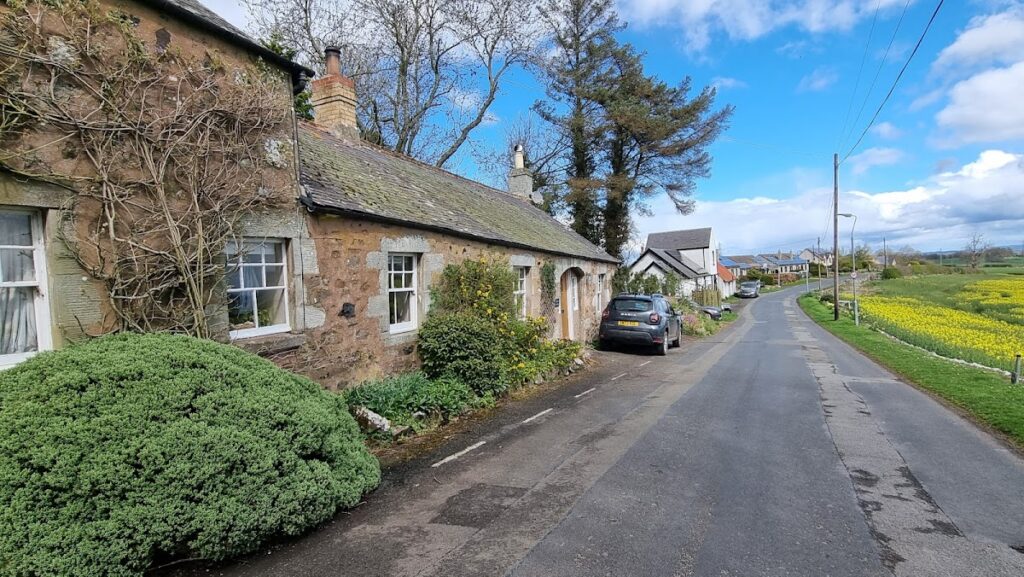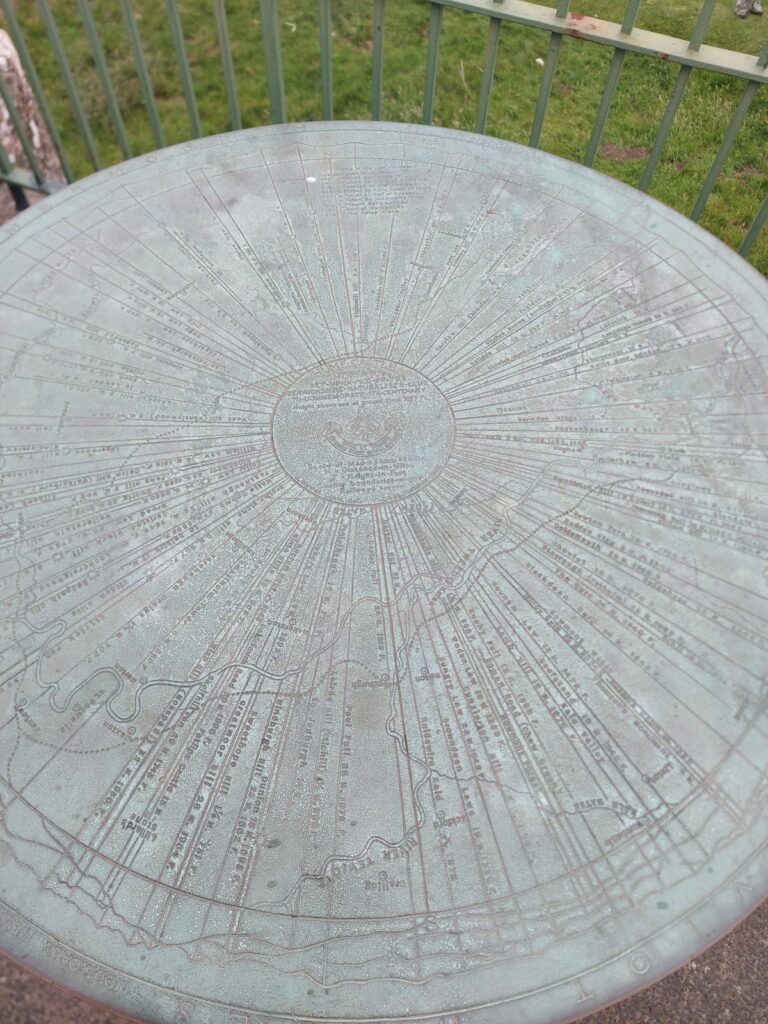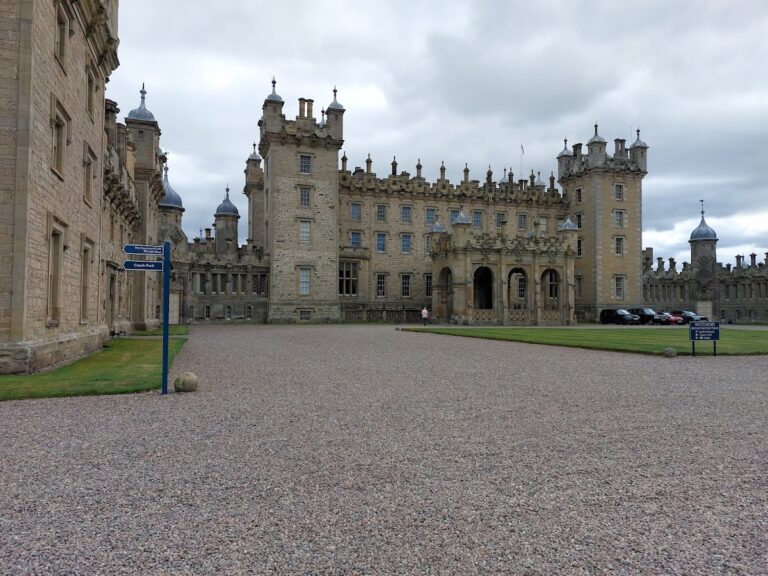Hume Castle: A Historic Scottish Border Fortress
Visitor Information
Google Rating: 4.6
Popularity: Low
Google Maps: View on Google Maps
Official Website: www.humecastle.org
Country: United Kingdom
Civilization: Unclassified
Remains: Military
History
Hume Castle stands above the village of Hume in Berwickshire, Scotland, and was built by the medieval Scottish civilization. Its origins date back to the late 12th or early 13th century when William de Home, who took his family name from the estate acquired through marriage, established the stronghold. The castle became the centre of power for the Hume family, who were important wardens of the Eastern March, a border territory between Scotland and England. Over time, the family rose to prominence, becoming Lords and later Earls of Home.
During the 16th century, Hume Castle was a critical military site in the conflicts known as the Rough Wooing, a series of hostilities between Scotland and England. In 1547, English forces under the Lord Protector Somerset captured the castle after resisting efforts led by Lady Mariotta Haliburton. The following year, the Scottish Lord Home recaptured it through a daring night-time attack, aided by an insider who helped overcome the garrison. Throughout this period, the castle was frequently garrisoned, occupied, and contested, involving notable figures such as Regent Albany, Sir Edward Sutton, and Regent Arran. These skirmishes reflected the turbulent nature of border warfare in the mid-1500s.
In 1570, amid the Marian Civil War, the castle endured a swift siege by the Earl of Sussex. Due to the overwhelming firepower besieging it, Hume Castle surrendered within twelve hours. Afterward, Regent Morton ensured the garrison was maintained to secure control on behalf of the young King James VI. By the 17th century, the Hume family shifted their residence to other estates, and the castle’s role as a home diminished. During the Wars of the Three Kingdoms, Oliver Cromwell’s forces seized the castle in 1650, following a barraged assault, after which it was deliberately damaged to prevent further military use.
In the early 1700s, ownership passed to the Earls of Marchmont, who undertook restoration of the castle ruins. They rebuilt parts of the curtain walls on the original foundations, transforming it partly into a decorative folly with large crenellations added for visual effect rather than defense. The castle retained its military symbolism, and its beacon function was revived during the Napoleonic Wars. Notably, in 1804, a false alarm from the beacon triggered a mass mobilization called the Great Alarm, involving thousands of volunteers readying for invasion. During the Second World War, Hume Castle served as a lookout post and was prepared to function as a resistance strongpoint should German forces invade.
In 1929, the site entered state ownership, and restoration efforts by the Berwickshire Civic Society in the 1980s allowed the castle to be preserved and reopened to the public in 1992. Since 2006, a charitable trust under Historic Scotland has taken stewardship to protect this historic landmark.
Remains
Hume Castle occupies an elevated position with commanding views of the surrounding countryside and the nearby English border. The site’s original layout followed an irregular quadrilateral courtyard plan, which was uncommon in the Scottish Borders but more typical of fortifications found in the western Highlands. Archaeological investigations have identified the foundations of the original stone enceinte—an enclosing defensive wall—and the central keep or donjon. These medieval structures formed the core of the castle’s fortifications, though none of the original foundational walls are visible above the ground today.
The castle’s medieval fabric included defensive towers and outworks that contributed to its strength as a border fortress. By the mid-18th century, the medieval walls had fallen into ruin and lay largely at ground level. During the early 1700s, the castle’s curtain walls were reconstructed on their original foundations. This restoration replaced the ruined medieval walls with high, uniform stone walls topped with large, decorative crenellations. These crenellations, or battlement-style projections, were designed primarily for visual impact, serving more as ornamental features than military defenses.
Historical records from the 16th century show that Hume Castle was well armed during the English occupations. Its artillery included batard culverins and sakers, which are types of medium-sized cannons, as well as smaller guns such as falconets and fowlers. Additionally, a large number of handguns were recorded, reflecting the castle’s role as a military garrison during periods of conflict.
The castle’s elevated position made it a significant beacon site, historically used to signal warnings of invasion by lighting signal fires visible across the region. This function persisted long after its medieval military role ended, with the beacon being lit during the Napoleonic Wars for early warning purposes and later again in the Second World War when it formed part of the region’s defensive network.
Today, Hume Castle is designated as a Scheduled Ancient Monument and a Category A listed building, underscoring its importance as a heritage site of national historical and architectural significance. The visible remnants, combined with archaeological findings, provide valuable insight into the castle’s medieval origins, its military history, and the later adaptations that have shaped its present form.










